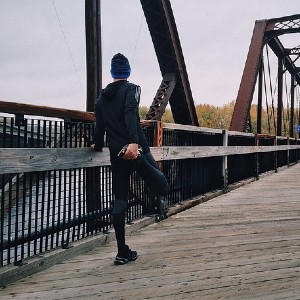Can lifelong endurance exercise improve ageing through beneficial effects on circadian timing function, muscular performance and health status in men? Protocol for a comparative cross-sectional study

Accepted: 21 November 2023
HTML: 8
All claims expressed in this article are solely those of the authors and do not necessarily represent those of their affiliated organizations, or those of the publisher, the editors and the reviewers. Any product that may be evaluated in this article or claim that may be made by its manufacturer is not guaranteed or endorsed by the publisher.
Authors
A well-synchronized circadian system is a manifestation of an individual's health. A gradual weakening of the circadian timing function characterizes aging. Regular exercise has been suggested as a modality to improve many detrimental changes associated with aging. Therefore, we aim to examine the benefits and risks of lifelong endurance exercise on age-dependent changes in the circadian time-keeping function, the performance of the muscular system and health status. The study protocol has a comparative cross-sectional design, including groups of senior (65 to 75 years old, n=16) and young (20-30 years old, n=16) endurance runners and triathletes. Age-matched groups of young and elderly sedentary men are included as controls. The circadian function is evaluated mainly by measurement of urinary 6-sulphatoxymelatonin, a metabolite of the hormone melatonin shown to participate in the modulation of sleep cycles. The 6-sulphatoxymelatonin will be assessed in urine samples collected upon awakening in the morning and in the late evening, as a marker of melatonin production. In addition, sleep/activity rhythms and sleep quality will be measured by wrist actigraphy. Performance of the muscular system will be assessed by examination of muscular strength and quantifying of gene expression in the skeletal muscle tissue samples. Health status and age-induced reduction in immune function are to be analysed via the balance of pro- and anti-inflammatory immune markers in the plasma and skeletal muscle, body composition, bone density and physical fitness.
How to Cite

This work is licensed under a Creative Commons Attribution-NonCommercial 4.0 International License.
PAGEPress has chosen to apply the Creative Commons Attribution NonCommercial 4.0 International License (CC BY-NC 4.0) to all manuscripts to be published.

 https://doi.org/10.4081/ejtm.2023.12012
https://doi.org/10.4081/ejtm.2023.12012



